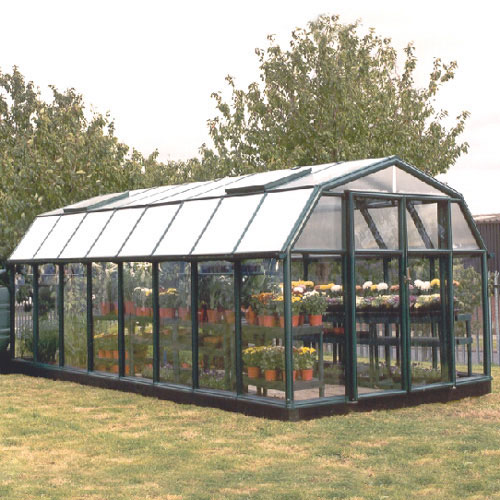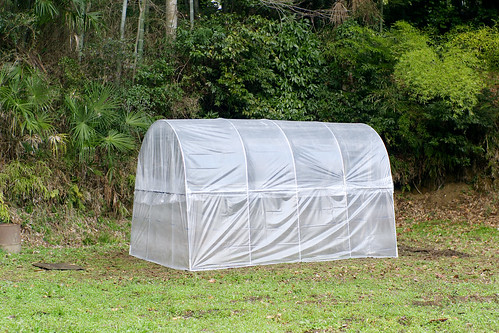After you research the best greenhouse for sale, then guy it, there is still the problem of builing it. Building your own small greenhouse can be a very enjoyable and educational experience as well as economical especially when you are clever with tolls.
Select a well-drained and level lot or ground for your greenhouse. If you will be using it mainly during the summer for propagation of plants, then you can situate it in a partially shaded area to reduce heat buildup.
The “north side” of your yard, with a big deciduous tree is an ideal location. If there is no partly or moderately shaded area available, you can make use of a white plastic or shade cloth for cover so as to regulate the extent of sunlight that reaches your greenhouse interior.
If you will be using the greenhouse for beginning transplants or that you will be growing plants till they mature, your greenhouse should be put up in an area will it will have the highest sun exposure. Likewise, it must be situated where there is good air drainage; do not construct your greenhouse in low areas which are surrounded by buildings or woods. Consider also convenient water access and electricity.
No matter what kind and greenhouse dimensions you choose, take into consideration the time that you will have for managing the system.
Never be overly ambitious, as there are several new owners of a greenhouse that often realize they can not spend sufficient time as they had believed they would. However, it is not often true that a greenhouse requires continuous attention.
The greenhouse environment may be sustained with very minimal maintenance using automated controls that operates the ventilation, heating, humidity, artificial lighting and watering, should there be no one to look after it. A hobbyist must take into consideration installing automatic control system and begin with plants that are easy to care.
There are many prefabricated greenhouses available in the market that you can purchase, or your greenhouse maybe built out of very simple frames, though make sure that only certified plumbers and electricians must install your automatic systems.
Kits are widely available in various prices, materials and styles, but if you are an eager “do-it-yourselfer”, your small greenhouse may be affordably constructed for a comparatively small amount of cash. Lean-tos type of greenhouse can be built leaning against a garage or a house taking advantage of the existing wall, though one has to consider sitting space.
The major advantage when you choose to purchase a greenhouse kit, many details like how to deal with humidity, ventilation and leakage have been already dealt with and considered in the pattern. Someone who is constructing the greenhouse himself must consider all these so as to avoid problems that can result to untimely failure and plant loss. Here are tips to help you build and design your own small greenhouse.
1. Begin with an average design using materials that are easily available. Know your preferences. Attractive greenhouses may be constructed using recycled materials such as remilled wood, repurposed doors and window sashes.
2. Adapt to your area’s climate so as to make particular solutions that depends on your climate and location.
3. Plan a design that can use standard material sizes, most of which are available in “multiples of 4”.
4. Take into account your habits in gardening when planning the design. Growing vegetables is very different from growing vegetables.
5. You can set up timers and thermostats to regulate the precise heat or light needed.
6. Design and make a “back up” arrangement just in case of power failure or harsh weather conditions.
7. When you will be using wood, you can build the greenhouse from cedar, redwood or cypress, although regular wood treated and painted will also do. Make sure that you use wood that is pressure treated for framing, as it is an effective and economical.
8. Usually a greenhouse uses “glass-paned”, but polycarbonate plastic, fiberglass, plastic film and acrylic can be also used. Each of these materials has its disadvantages and advantages, so you need to research well to decide on one that is best for you.
9. Although permanent foundations are recommended to support the structure, flooring is really not necessary. Flooring poured with gravel up to a few inches deep will permit ample drainage. A flat stone or concrete walkway between seating will provides steady footing.
10. You greenhouse design should have enough room for tall plants and plants should only use half up to “two-thirds” of your greenhouse area and the rest is reserved for benches and your work area.
Have fun!



